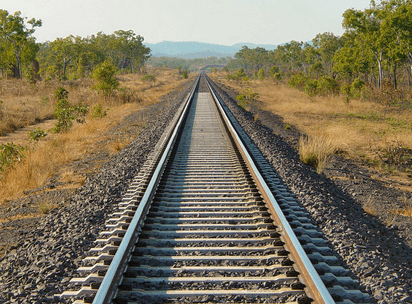African countries told to tap into available $120 trillion capital to invest in infrastructure
 African countries have been told to tap into the $120 trillion capital available in the world to invest in infrastructure development. This amount he said is managed by banks and institutional investors.
African countries have been told to tap into the $120 trillion capital available in the world to invest in infrastructure development. This amount he said is managed by banks and institutional investors.
Speaking in Accra, at the Port Evolution conference Tuesday September 5, 2017, Chidi K. C. Izuwah Snr, the Acting Director-General/CEO, The Presidency: Infrastructure Concession Regulatory Commission, Nigeria, argued that all that capital is looking for opportunities to invest in.
When asked how countries can access these financing, he said African governments should be able to provide revenue guarantees and solid investment plans for the investors.
African governments need to build confidence in investors by allowing professionals to manage contracts, Izuwah Snr said later in an interview.
Citing an African Development Bank report, he said 95 per cent of Africa’s international trade passes through ports. The report also notes that while Africa has many ports, only few are capable of handling modern, large scale vessels. Many of the ports, the report said, are congested.
Mr. Izuwah Snr also pointed out the lack of sufficient connectivity between ports in Africa and railway lines.
Mr. Samuel Ntow-Kummi, the Ag GM Business Development, Director General, Ghana Ports and Harbours Authority said, West Africa is a region with weak intermodal infrastructure.
“It is sad to note that West Africa is a region with weak intermodal infrastructure. And this partly explains the low participation of the region in international trade and poor state of socio-economic development.
In Ghana for instance, the modest rail network bequeathed by the colonial administration has virtually collapsed. Most of the network is in complete disrepair. This has left road transport as the dominant mode of freight movement. The port of Tema has no rail connectivity,” he said.
He called for urgent action to address the situation to stimulate economic development.
According to Mr. Ntow-Kummi, the optimization of the ongoing investments in the ports will require major investments in hinterland connections to improve accessibility.
“A major component of this will be the rehabilitation and redevelopment of the rail network to allow intermodal transport freight,” he said.
The World Bank’s Africa’s Pulse published in April 2017, says Africa can greatly increase its per capita GDP, if it is able to bridge the huge infrastructure gap in sectors of its economy. It indicates that sub-Saharan Africa, still lags behind other developing regions in virtually all dimensions of infrastructure performance, although trends varied across key sectors.
Another World Bank study has meanwhile, found that some $93 billion is required for infrastructure development in Africa annually. But currently, some $45 billion is being spent on building the continent’s infrastructure.
By Emmanuel K. Dogbevi
Copyright © 2017 by Creative Imaginations Publicity
All rights reserved. This news item or any portion thereof may not be reproduced or used in any manner whatsoever without the express written permission of the publisher except for the use of brief quotations in reviews.
